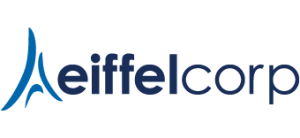
Five lessons learned – an industrial city university drives change with tech
Cape Town, 03 September 2018: With one foot in implementation and one foot in the future, a technology strategy was critical in bringing the Vaal University of Technology into the 21st century.
According to Professor Kuzvinetsa Dzvimbo, Vice Chancellor: Academic & Research at VUT, being one of the largest residential universities in South Africa with 22 000 students, five campuses, 300 programmes and 6000 full- and part-time staff, technology was essential to ensure access for students and academics.
“Top of our agenda was development and innovation; our institution was built for 5000 students, but 22 000 students were relying on VUT,” said Prof Dzvimbo.
“Learning is no longer dependent on bricks and mortar, Blackboard our LMS, became a vehicle of change, transforming teaching & learning.
Prof Dzvimbo outlined five lessons learned in bringing the institution into the 21st Century.
Create a vision
“I launched Project Vutela in 2013, where I cast a vision, now, all 22 000 students and 6000 staff have access to learning 24/7, and via project Expresso, by 2020, 1 400 academic modules will be available online. Within three years, 18 000 students are using technology with 50% of their academic curriculum being accessed via blended learning.
Champions
“I learned that people are afraid of change, so in small groups, championed by early adopters, we helped lecturers make meaning of blended learning, instructional design and using the LMS as a foundation in an institution-wide deployment.”
Through a change management process, partnered by Eiffel Corp, we reduced the fear and provided training for senior management and changed the perception of blended learning and the essential need for an effective LMS.
We required strong project management to drive the process and Dr Pauline Machika and Mr Moegammat Dolley were appointed to ensure adoption by staff and students and ensure all academic curriculums were translated to blended learning.
“Staff realise that learning is exportable and portable and over 50% utilize the LMS,” said Dr Machika.
Students & academic staff have different needs
Students want experiences with technology while many academics are not aware of its power.
Email was the most dominant means of communications between lecturers & students and notes were printed. We also learned in error that students wanted laptops, and we provided sponsored tablets.
Lecturers don’t need to be instructional designers, the content development team, headed by Dr Machika, produced blended learning.
Break the project into bite-size chunks – time and budget
At the outset, we spent 70% of our grant on building a strong IT infrastructure, with an allocation for off-site maintenance.
Thereafter, adoption was planned in sections of the institution.
“When asked about the expense vs benefit, the LMS is completely self-run, and managed by Eiffel Corp. This freedom comes at a price, but it’s affordable,” concludes Dzvimbo.
Coverage:



